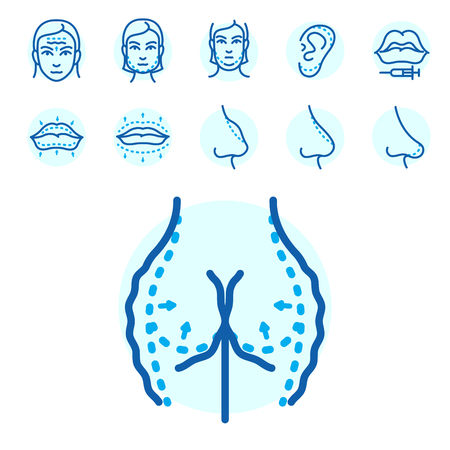Understanding Autoimmune Diseases and Hiking
Autoimmune diseases, such as lupus, rheumatoid arthritis, multiple sclerosis, and type 1 diabetes, are chronic conditions where the immune system mistakenly attacks healthy cells in the body. For millions of Americans living with these diagnoses, everyday life is marked by an unpredictable balance of symptom management and flare-ups. Common challenges include joint pain, muscle fatigue, inflammation, and fluctuating energy levels, making physical activity seem daunting at times. However, hiking remains a meaningful pursuit for many people with autoimmune diseases. The connection to nature, fresh mountain air, and the sense of accomplishment from reaching a summit can offer both emotional respite and physical benefits. For those navigating these conditions, hiking is more than just exercise—it’s an empowering way to reclaim joy and agency while honoring their body’s unique rhythms.
2. Preparing for the Trail: Managing Expectations
When living with an autoimmune disease, prepping for a hike is more than packing snacks and lacing up boots—its about tuning into your body and setting yourself up for success. Instead of aiming for summit fever, focus on realistic goals that honor your current health status. Here are some tips to help you plan:
Tips for Setting Realistic Hiking Goals
- Listen to Your Body: Some days will feel stronger than others. Allow flexibility in your plans so you can adjust based on how you’re feeling the morning of your hike.
- Start Small: Choose shorter, less strenuous trails at first. Gradually increase difficulty as you learn what works best with your energy levels and symptoms.
- Set Achievable Milestones: Instead of one big goal, break your hike into mini-goals, such as reaching a viewpoint or a certain distance, then reassess before moving forward.
Selecting Hike Difficulty: What to Consider
| Trail Feature | What to Look For | Why It Matters |
|---|---|---|
| Distance | Under 3 miles (easy), 3-6 miles (moderate) | Easier to manage energy and symptoms with shorter hikes |
| Elevation Gain | <500 ft (gentle), 500-1000 ft (moderate) | Lower elevation reduces strain on joints and breathing |
| Terrain Type | Paved or well-maintained dirt paths | Smoother terrain helps prevent slips or falls when fatigued |
| Amenities | Access to restrooms, benches, shaded areas | Makes it easier to take breaks and manage flare-ups if needed |
Pre-Trip Planning Essentials Tailored to Fluctuating Health
- Create a Flexible Itinerary: Let friends or hiking partners know your plan is subject to change depending on how you feel.
- Check Weather & Trail Conditions: Unpredictable weather can make symptoms worse. Opt for fair-weather days and check trail reports before leaving home.
- Packing Wisely: Bring extra medications, layers for temperature changes, high-protein snacks, and plenty of water.
- Share Your Plan: Always let someone know where you’ll be and your expected return time, just in case you need assistance.
- Mental Preparation: Remind yourself that its okay to turn back early or skip the hike if your body says no. The mountain will always be there tomorrow.
Navigating Energy Highs & Lows: A Mindful Approach
The key is balance—choose trails that excite you but don’t overextend. By managing expectations and planning carefully, hiking remains an accessible and joyful way to reconnect with nature while respecting your body’s unique needs.

3. Listening to Your Body: Spotting Early Flare-up Signs
When you’re out on the trail, surrounded by the vastness of the American wilderness, it’s easy to get swept up in the beauty and forget your limits. But for hikers managing autoimmune diseases, tuning into your body’s early warning signals is essential. Ignoring subtle signs of fatigue, pain, or inflammation can quickly turn a scenic hike into a setback. Here’s how to recognize those early signs and adapt before things escalate.
How to Recognize Fatigue, Pain, and Inflammation Early
Fatigue isn’t just “feeling tired.” It might start as a heaviness in your legs, difficulty focusing on the trail ahead, or a sense that each step takes more effort than it should. Pain may show up as joint stiffness, muscle aches beyond typical exertion, or sharp twinges that persist rather than fade with movement. Inflammation could reveal itself through swelling, redness around joints, or increased warmth in certain areas. Take note if your symptoms feel different from your usual post-hike soreness—these are your body’s flares waving red flags.
Practical Advice for Rest and Adaptation
Respecting these early signals means building regular check-ins into your hike. Pause at overlooks or water breaks not just to enjoy the view but to scan for symptoms. If you notice increased fatigue or pain, don’t hesitate to slow your pace or cut your route short. Bring lightweight snacks and electrolyte-rich drinks to help manage energy dips and prevent dehydration—a common trigger for flares.
Don’t Push Through Warning Signals
Culturally, Americans love to “tough it out,” but with autoimmune disease, perseverance means knowing when to pause, not push through pain. There’s no shame in turning back early if it means protecting your long-term health. Remember: every summit will still be there next weekend. By listening closely to your body and adapting plans on the fly, you’ll build a hiking practice that’s sustainable—and full of rewarding mountain moments for years to come.
4. Gear and Nutrition for Supportive Adventures
When you’re hiking with an autoimmune disease, the right gear and nutrition aren’t just “nice-to-haves”—they’re your frontline support. Every item in your pack and every snack you choose can help you manage symptoms, keep flares at bay, and maintain steady energy as you wind along the trail.
Essential Gear Choices
Comfort and adaptability are key. Lightweight trekking poles can relieve joint stress, especially when fatigue sets in or the terrain is unpredictable. Invest in a quality hydration system—dehydration can trigger symptoms, so easy-access water is non-negotiable. Always bring a fully charged phone with emergency contacts preloaded, and consider a GPS tracker if you hike solo. Don’t forget a small first-aid kit tailored to your needs: include anti-inflammatory medication, electrolyte tablets, and any prescription meds you may require on the go.
Clothing Layers: Weathering the Elements
The weather can shift quickly in the mountains, so think of clothing as your portable climate control. Here’s a quick reference for layering smartly:
| Layer | Purpose | Recommended Fabrics |
|---|---|---|
| Base | Moisture wicking, keeps skin dry | Merino wool, synthetic blends |
| Mid | Insulation, regulates temperature | Fleece, light down |
| Outer | Weather protection (wind/rain) | Waterproof breathable shell |
Packing an extra pair of socks and gloves can make all the difference if temperatures drop or you get caught in a sudden storm. Remember: cotton kills—always opt for technical fabrics that dry fast and insulate even when damp.
Nutrient-Packed Snacks for Steady Energy
Your fuel matters as much as your footwear. Choose snacks that are easy to digest, gentle on inflammation, and provide lasting energy without blood sugar spikes. Here’s a snapshot of trail-friendly options:
| Snack Type | Benefits |
|---|---|
| Nuts & Seeds (almonds, pumpkin seeds) | Healthy fats & protein for satiety; magnesium for muscle function |
| Dried Fruit (apricots, blueberries) | Quick carbs; antioxidants to fight inflammation |
| Whole Grain Crackers or Bars (gluten-free if needed) | Sustained energy; fiber for digestion |
| Tuna or Chicken Packets | Lean protein; omega-3s support immune health |
If you have dietary restrictions due to your autoimmune condition—like gluten sensitivity or dairy intolerance—make sure to read labels carefully and pack what works for you.
The Takeaway: Prepare With Intention
Your backpack is more than just storage—it’s your mobile toolkit for resilience. Thoughtful gear choices and nutrient-rich snacks are quiet companions that help you balance adventure with self-care, letting you focus on the mountain views instead of managing a flare.
5. Building a Supportive Hiking Community
Finding your place on the trail goes beyond just choosing the right path—it’s about who walks beside you. For those managing autoimmune diseases, hiking buddies can make all the difference, offering not only encouragement but also practical support when you need it most.
The Power of Hiking Buddies
Hiking with friends isn’t just for fun; it’s a lifeline. A supportive hiking buddy understands your limits, respects your pace, and steps in when fatigue or symptoms hit unexpectedly. When you share your unique needs—maybe you need more water breaks or a slower ascent—you empower your group to help keep you safe and comfortable. Open communication transforms an ordinary hike into a shared adventure where everyone feels included.
Connecting with Support Groups
Joining local hiking groups or online communities tailored for people with chronic illnesses can open doors to new friendships and resources. These groups often swap tips about accessible trails, share stories of resilience, and offer advice on managing flares in real time. By tapping into these networks, you gain both knowledge and camaraderie that enrich your outdoor experiences.
Communication Is Key
Being upfront about your needs isn’t always easy, but it’s essential for your safety and enjoyment. Whether it’s alerting your group to early signs of a flare-up or discussing your medication schedule, honest conversations foster trust. When everyone is on the same page, you can focus more on the rustling leaves and distant peaks—and less on worry.
In building a supportive hiking community, you find strength not just in numbers but in understanding. Together, every summit feels a little closer and every trail becomes a story worth sharing.
6. Navigating Setbacks: When to Pause and How to Recover
Recognizing When to Hit Pause
Even with the best planning, there will be days when your body sends a clear signal: it’s time to stop. Maybe you notice unusual fatigue, joint swelling, or a flare-up creeping in. Instead of pushing through, honor those signals as a form of self-respect and wisdom. On the trail, this might mean turning around sooner than expected or finding a safe spot to rest. Listen closely—your long-term wellness is always worth more than reaching the summit.
Action Steps for Shortened Hikes
1. Prioritize Recovery Routines
After cutting a hike short, shift into recovery mode as soon as possible. Hydrate well, refuel with gentle snacks, and practice gentle stretching or relaxation techniques. If you use medications for flare management, follow your care plan promptly. At home, create a cozy recovery space—think soft blankets, warm tea, and favorite books—to help your mind and body decompress.
2. Adjust Future Hiking Plans
Use setbacks as valuable feedback rather than failures. Review what triggered the need to pause: Was it weather, trail difficulty, or how you felt before starting out? Adjust upcoming hikes accordingly—choose shorter routes, opt for trails with easy exit points, or plan outings with supportive friends who understand your needs. Flexibility is key for sustainable hiking with autoimmune conditions.
3. Practice Self-Compassion
It’s easy to feel frustrated when plans change unexpectedly, but treating yourself with kindness goes a long way. Remind yourself that managing an autoimmune disease requires adaptability and courage. Celebrate the effort you put into getting outside and remember that every outing—no matter how brief—is a step toward resilience.
Your Path Forward
Setbacks are not the end of your hiking journey; they’re simply part of the landscape when balancing activity with health challenges. With mindful recovery routines, adaptive planning, and plenty of self-compassion, you can continue exploring nature’s beauty on your own terms—even if the trail sometimes leads you back home sooner than planned.


